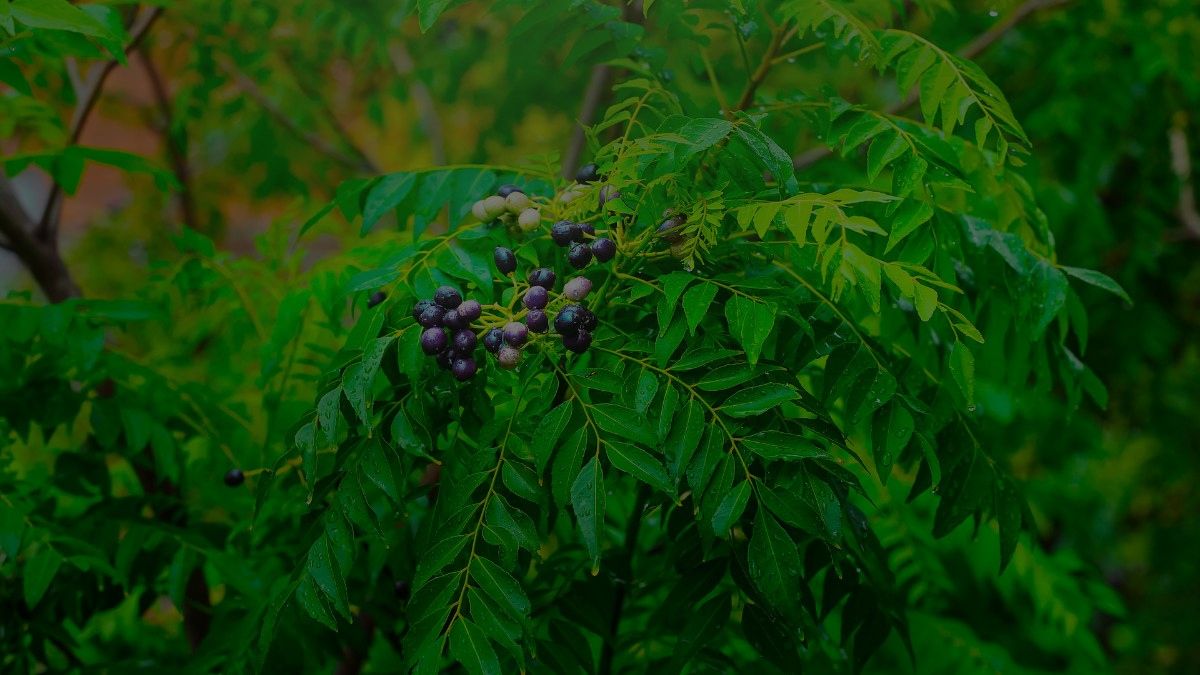
The curry tree (Murraya koenigii) is a fast-growing plant that features evergreen foliage. These plants with edible leaves are known for their aromatic foliage, which has a spicy flavor and is used in many culinary items. Grown as both a tree and a bush, the curry tree can reach a height between 6 to 20 feet.
The curry tree care is easy, and this Indian tree is native to the tropical regions of the subcontinent. The leaves of this plant are widely harvested for various purposes; moreover, the curry tree also produces beautiful white flowers, which further develop into small berry-like fruits that are not edible.
This guide will help you explore everything about this plant and also learn the basics of curry tree care. So, without further ado, let’s begin.
Types of Curry Trees
Here are some different types of curry trees –
- Regular – This type grows up to a regular size. Regular-sized curry trees grow the fastest, and their leaves are commonly sold in stores.
- Dwarf – This type doesn’t grow much taller but spreads out more. These trees feature longer, light-green leaves.
- Gamthi – These plants are the smallest and only reach a height of 12 inches upon maturing. These plants are perfect for containers and feature thick and most aromatic leaves among other varieties.
Curry Tree Care

The curry tree is a hardy plant that thrives in most conditions except too windy locations due to its weak trunks and limbs. This plant is native to tropical regions and thrives in similar environments. The curry tree is drought-tolerant and can survive extreme temperatures in infertile soil.
Water
The curry tree requires regular watering for the first 2 months of planting. Let the soil drain out after deep watering. Once established, moderate watering is sufficient for this plant. Avoid watering too much, especially in winter when the curry tree is going through its dormancy.
Potted plants require more watering with a frequency of 2 to 4 days based on the pot size and climate. However, make sure not to overwater the plants.
Light
For better curry tree care, place them in full sun. These sun-loving plants produce healthy foliage in full sun. However, these plants are also adaptable to partial shade.
Soil
The curry tree thrives in a fertile and slightly acidic soil mix with a pH range between 6.5 and 7. For container plants, make a potting mix of garden soil, sand, and organic compost. Make sure the soil is well-draining and has good aeration.
Temperature and Humidity
Since they are native to tropical regions, the curry tree prefers warm and humid conditions. For better curry tree care, keep a temperature range between 68℉ to 86℉ (20℃ to 30℃). These plants don’t like cool conditions and are sensitive to consistently cold temperatures or sudden temperature drafts.
The curry tree does well with regular misting, so maintain optimal humidity levels, and you can also use a humidifier.
Fertilizer
The curry tree can benefit from fertilization during its growing season; however, you don’t need to feed this plant if the soil is rich in nutrients. If not, use a balanced fertilizer every 2-3 months for better curry tree care. This plant is susceptible to iron deficiency; therefore, look out for signs like yellowing leaves and poor growth.
Use a supplement with iron to fix such problems with your plant.
Pruning
To focus more on bushier growth, pinch off the flower buds from the plant. This will also save its energy from producing seeds and help the curry tree get established. Keep removing flower buds if your primary need from the plant is its leaves.
Moreover, prune the plant regularly to remove dead or decayed parts, yellow leaves, and to encourage fresh growth.
Seasonal Care
The curry tree might need some protection from frost if your local climate is much cooler for them. Potted plants can be brought indoors and should remain there until spring. This plant enters its dormant stage in winter, so reduce watering and avoid fertilizing the plant until new growth appears in spring.
Propagating The Curry Tree
You can easily propagate your curry tree either from seeds or cuttings. Propagating the plant from cuttings is much easier. Here’s how to do so –
- Use sharp garden tools to cut a 3-inch-long healthy stem part from the plant. Remove the leaves from the bottom of the cutting.
- Take a small pot and fill it with a soilless potting medium and place the cutting inside after waiting it thoroughly.
- Place the cutting in a bright and moist location but away from direct sunlight.
- Make sure that the soil is consistently moist but not overwatered.
- In about 3 weeks, you can check for root development and repot the cutting in a new container or directly in the garden.
To propagate the curry tree from seeds, make sure that the seeds are fresh and remove the hard outer cover if possible to speed up the germination process. Use a well-draining soil mix and keep it consistently moist during germination.
Common Problems With The Curry Tree

The curry tree is susceptible to various common plant problems that can be dealt with or prevented with better curry tree care. These problems include –
- Leggy Growth – Leggy growth and pale leaves can be a sign of a lack of light which is much common in indoor plants. Place the plants in a bright location but keep in mind that too much light can scorch the leaves.
- Yellowing Leaves – Yellow leaves along with mush stems can be a sign of overwatering which further leads to root rot. Keep a strict watering schedule and use well-draining soil.
- Wilted, Dry Leaves – Dry, crispy, and wilted leaves are signs of underwatering. Water the plant thoroughly when the soil feels dry to the touch.
- Stunted Growth, Droopy Leaves – Sudden temperature drops and changes can cause these problems in the curry tree. Maintain a proper temperature for better curry tree care.
- Pests – Various common pests, such as mealybugs, scale insects, and spider mites, can harm your plant’s health. Use neem oil or insecticidal soap to treat pest infestations.
Conclusion
The curry tree is a beneficial and easy-to-grow plant that you must grow in your garden. Other than various culinary uses, this herbal plant is rich in antioxidants and is used in various traditional medicines for digestion, and cholesterol management. Curry tree care is also very easy making it a good option for novice gardeners. Therefore, make sure to add this amazing plant to your list and grow them at your home.
Raghav is a talented content writer with a passion to create informative and interesting articles. With a degree in English Literature, Raghav possesses an inquisitive mind and a thirst for learning. Raghav is a fact enthusiast who loves to unearth fascinating facts from a wide range of subjects. He firmly believes that learning is a lifelong journey and he is constantly seeking opportunities to increase his knowledge and discover new facts. So make sure to check out Raghav’s work for a wonderful reading.





